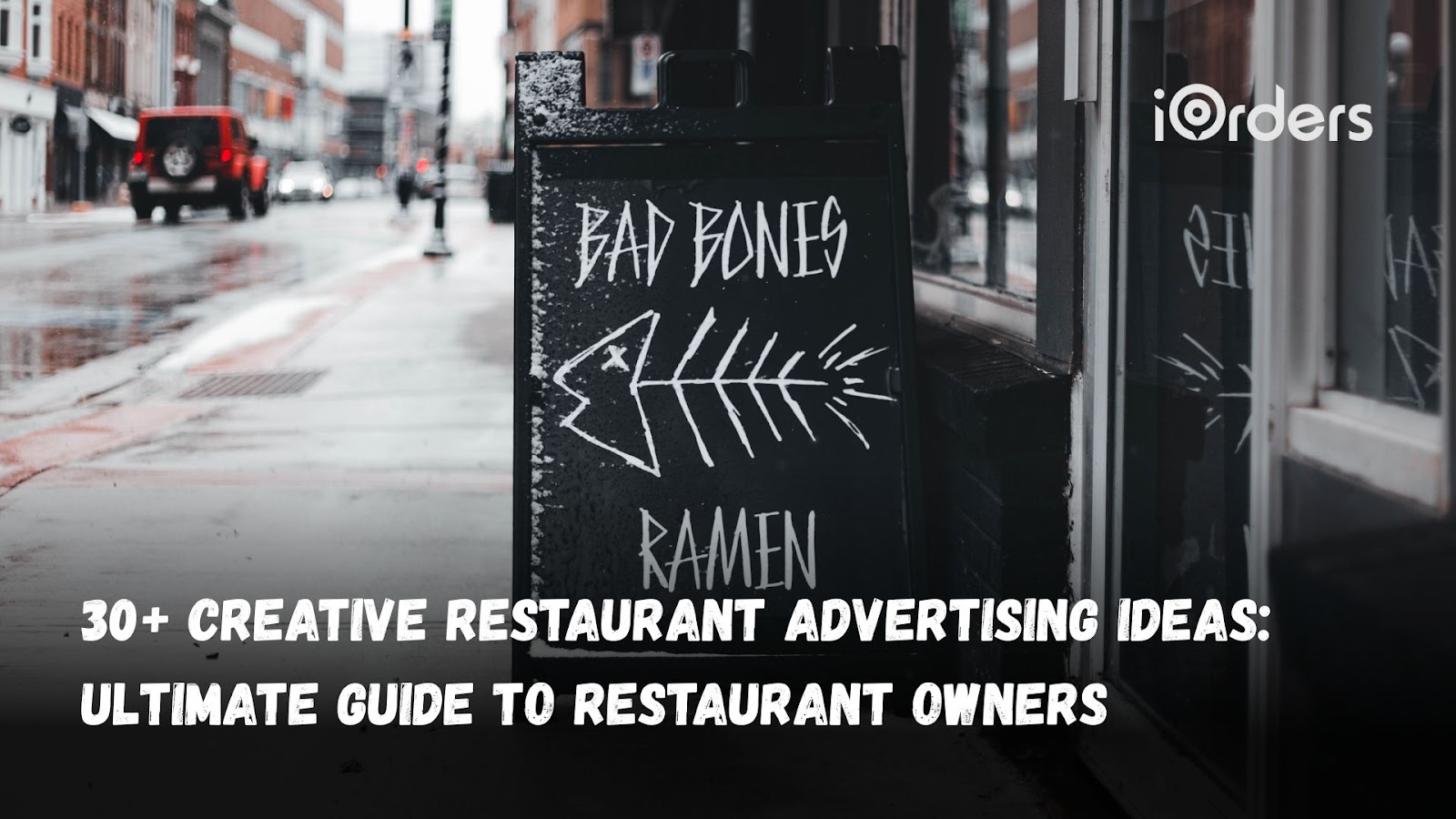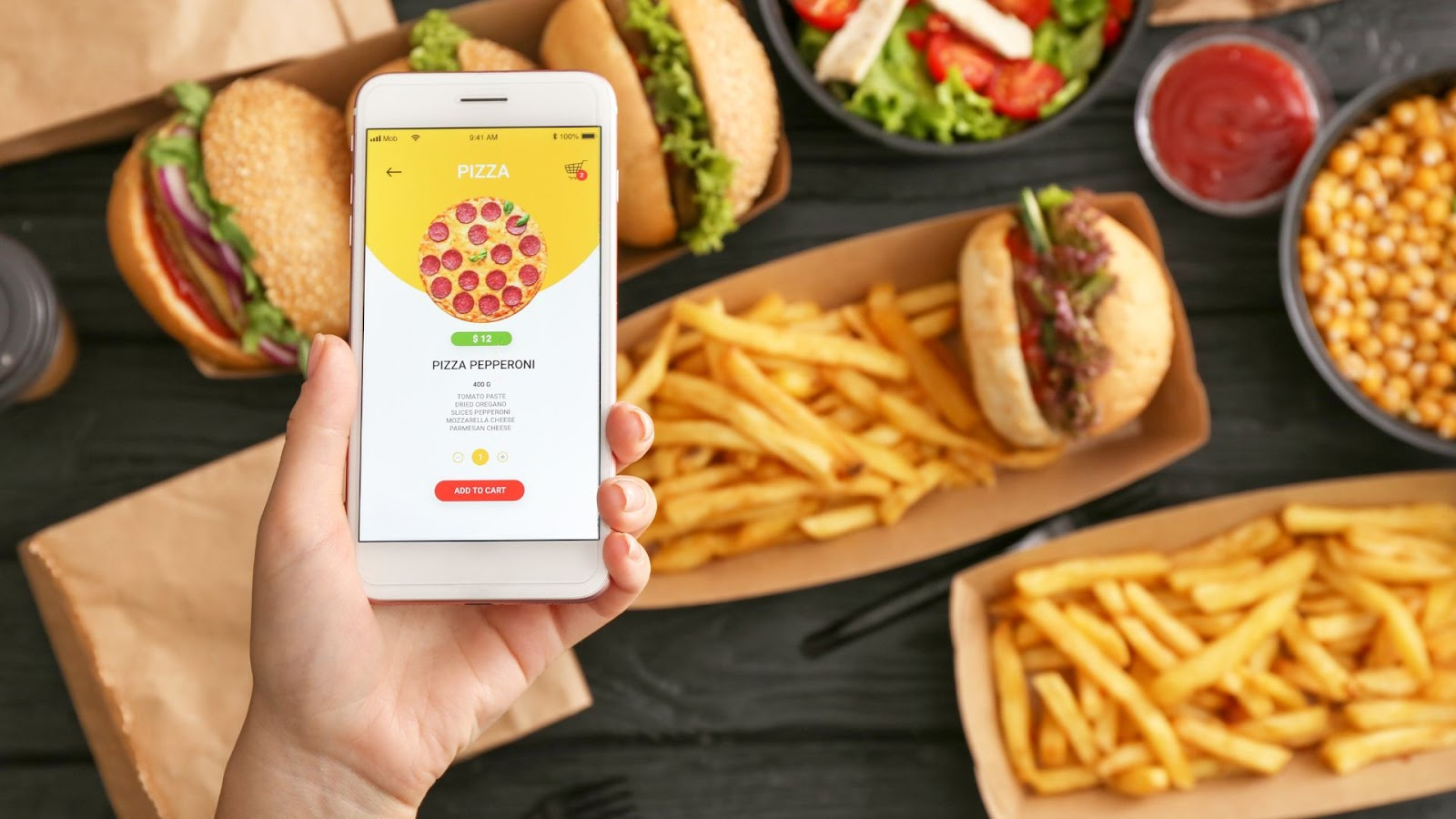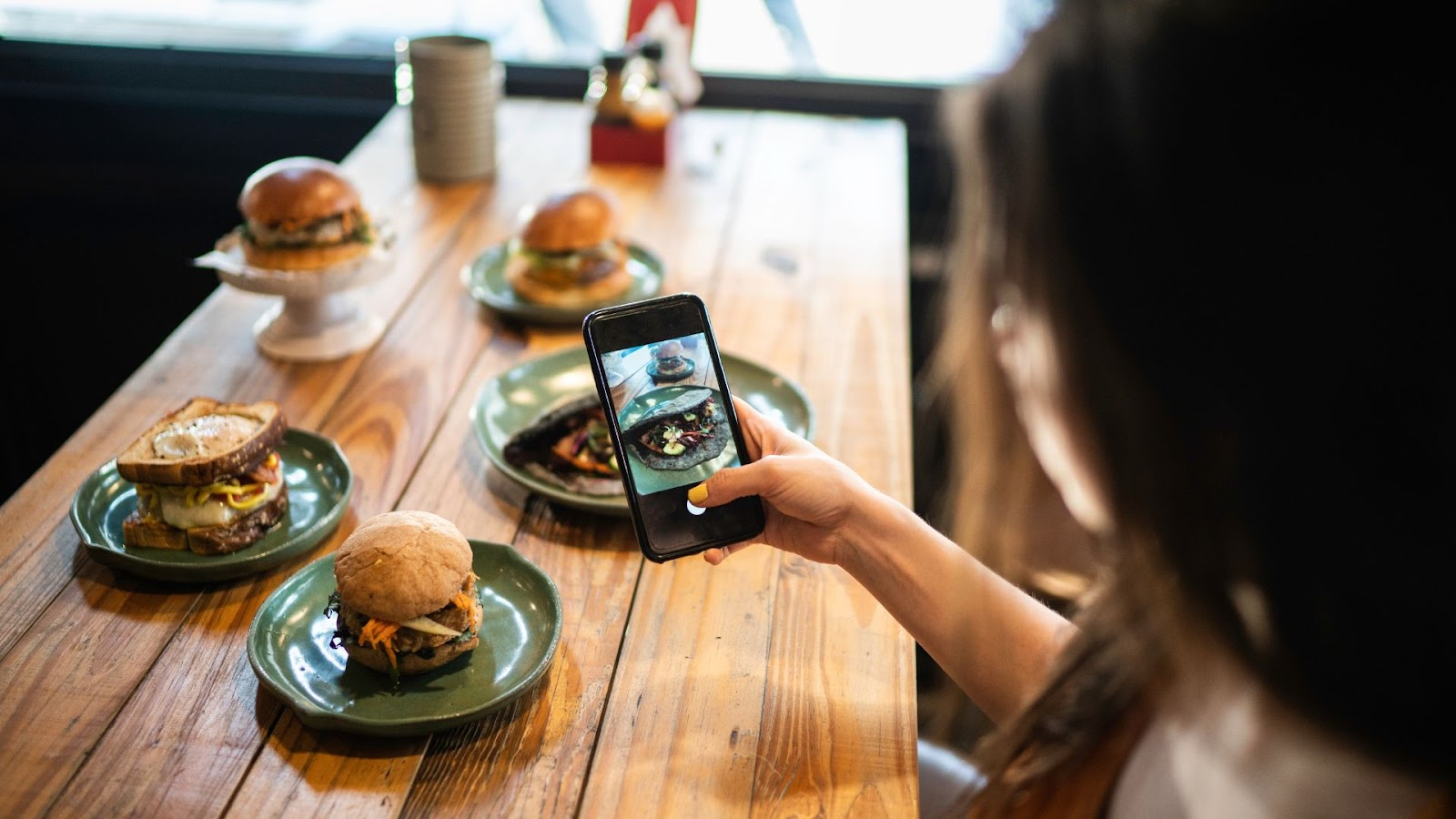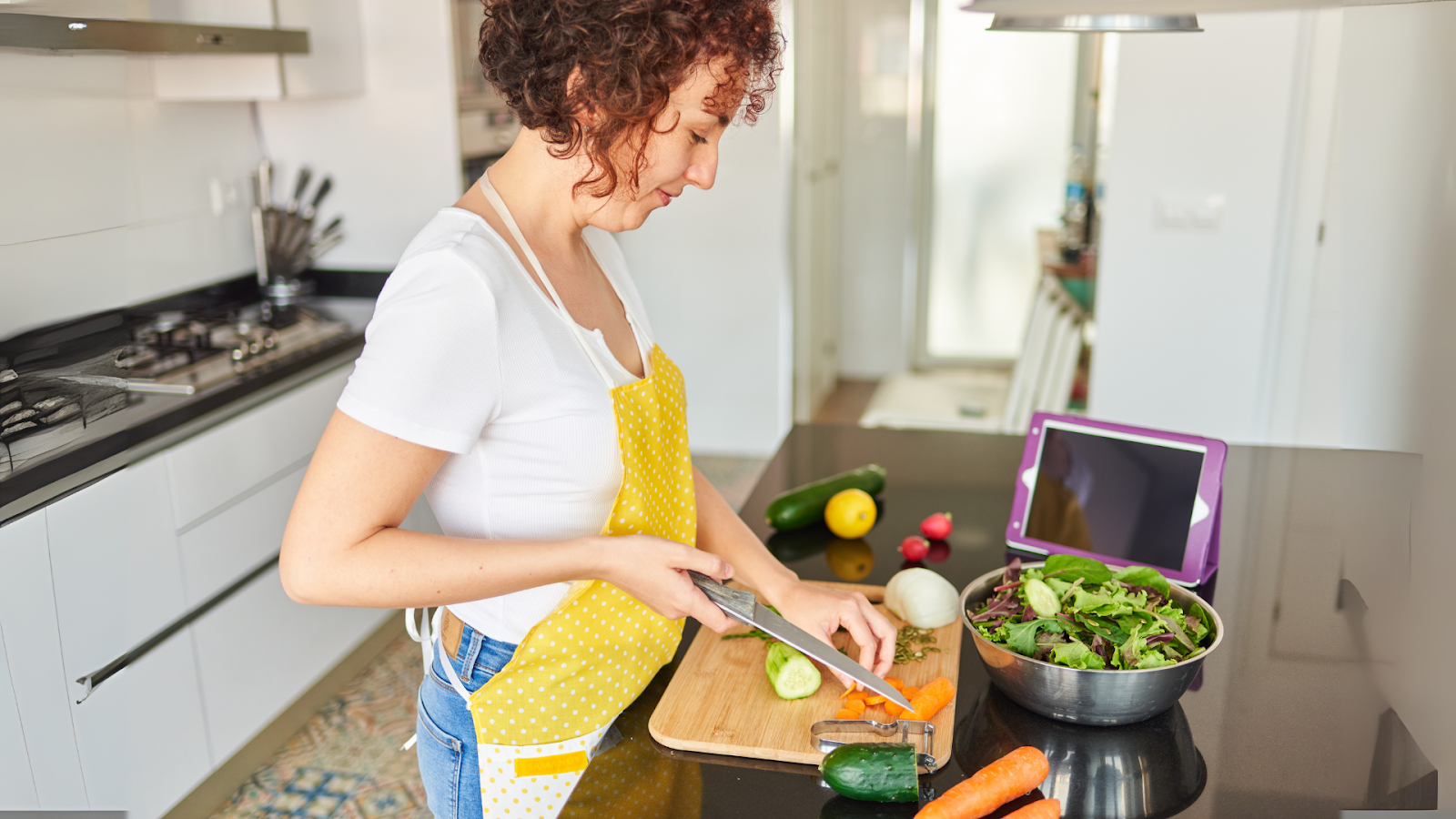September 25, 2025

Consumers spend an average of $4,485 per capita on food-away-from-home, marking a 12.0% increase YOY. With such significant growth in the restaurant industry, businesses must adapt their advertising strategies to stand out in a fierce competitive market. Whether you're a local café or part of a regional chain, finding creative ways to engage with your target audience is essential.
This guide explores restaurant advertisement ideas that can help elevate your brand, reach the right customers, and increase your revenue. By blending innovative approaches with proven strategies, you can create a plan that resonates with both new and loyal diners.
Key Takeaways

In the restaurant industry, simply offering great food isn’t enough. You need to make sure customers are aware of your restaurant and motivated to walk through your door or place an order online. That’s why advertising plays a crucial role in driving visibility, engagement, and long-term success.
1. Boosts Visibility: Advertising ensures your restaurant is seen by potential customers, whether through local campaigns, social media, or digital ads. It brings awareness to your unique offerings and attracts first-time diners.
2. Drives Customer Loyalty: Advertising keeps your brand top-of-mind with current customers. Smart Campaigns like loyalty programs, delivering targeted messages or special promotions, encourage repeat visits and build long-term relationships.
3. Targets the Right Audience: Modern advertising allows restaurants to reach specific demographics based on location and preferences, ensuring your marketing dollars are spent on people most likely to dine at your restaurant.
4. Promotes Special Offers: Advertising is a powerful tool for highlighting limited-time deals, new menu items, and discounts, enticing customers to visit or order. It keeps diners engaged and excited about your offerings.
5. Strengthens Brand Identity: Consistent advertising builds your restaurant’s brand identity. The tone, visuals, and channels you choose reflect your restaurant’s personality, helping differentiate it from competitors and building customer trust.
6. Engages Digital Consumers: With more people dining out after finding restaurants online, advertising through digital platforms like Google, Yelp, and social media is essential.
7. Increases Foot Traffic & Online Orders: Well-targeted advertising drives customers both to your physical location and your online ordering system, increasing sales and enhancing customer convenience.
8. Facilitates Crisis Management: In times of crisis, advertising helps manage communication, rebuild trust, and reassure customers that your restaurant is committed to quality and service, allowing you to recover quickly.

Digital advertising allows restaurants to target specific demographics, track customer behaviors, and drive conversions with precision. From social media campaigns to SEO-optimized content, these digital tools and marketing ideas allow restaurant owners to boost visibility.
Social media is a cost-effective tool for restaurants to showcase their food, engage with customers, and promote special offers. Platforms like Instagram, Facebook, and TikTok allow restaurants to post real-time updates, behind-the-scenes content, and customer stories, making it easy to build a community and stay connected with diners.
Example: You can create a weekly "Dish of the Week" series on Instagram, where you feature a unique or seasonal dish with a compelling image or short video. Include a call to action (CTA) asking followers to share the post and tag a friend for a chance to win a free meal.
How to Do It:
Loyalty programs are one of the best ways to retain customers. Offering loyalty and rewards for repeat visits or purchases helps diners feel appreciated and encourages them to return. These programs can include discounts, free items, or exclusive rewards for frequent customers.
Example: A restaurant could introduce a loyalty card where customers earn points with every purchase, which can be redeemed for discounts or free menu items. Like, earn 1 point for every $1 spent, and after 100 points, receive a free dessert or 10% off the next meal.
How to Do It:
Partnering with local businesses or influencers can amplify your reach and build stronger community ties. By collaborating with nearby businesses like breweries, coffee shops, or event venues, you introduce your restaurant to new customer segments. These collaborations create a mutually beneficial promotional effort that can lead to more foot traffic and customer loyalty.
How to Do It:
Seasonal promotions create excitement and urgency among customers. Whether it’s for holidays, local festivals, or changes in weather, limited-time offers help attract customers looking to celebrate or enjoy something new. Seasonal menus or promotions can differentiate your restaurant from competitors and drive more traffic during peak times.
Example: During the fall, a restaurant could offer a “Pumpkin Spice Special” menu featuring pumpkin-themed dishes and drinks.
How to Do It:
Email marketing in restaurants is the most effective way to nurture customer relationships. Through personalized email campaigns, restaurants can send tailored offers, updates on new menu items, event invitations, and birthday specials. This keeps the restaurant in the minds of customers and encourages them to return.
Example: A restaurant could send an email campaign offering a special "birthday discount" to customers who sign up for their mailing list. Even offer a free appetizer or 20% off their next meal during their birthday month.
How to Do It:
Partnering with local influencers can help elevate your restaurant’s visibility, especially if you’re targeting younger, tech-savvy consumers. Influencers with a significant following can showcase your restaurant in their posts, reaching a broader audience and giving your brand a level of credibility through their endorsement.
Example: Collaborate with a local food blogger or Instagram influencer to do a “Restaurant Review” post, featuring your signature dishes and providing a special discount code for their followers.
How to Do It:
Encouraging your customers to share their own photos and experiences with your restaurant is a great way to generate authentic content. User-generated content boosts trust and can help spread the word about your brand through the power of customer endorsements. It's a low-cost, high-impact way to engage with your community.
Example: Run a campaign where customers are encouraged to take photos of their meals and post them on social media using a branded hashtag (e.g., #DineAt[YourRestaurant]).
How to Do It:
Hosting events or themed nights can draw in customers who are looking for more than just a meal; they want an experience. Events such as trivia nights, live music, cooking classes, or holiday parties create a fun, social atmosphere that encourages repeat visits and word-of-mouth promotion.
Example: Host a "Wine and Dine" event where customers can enjoy a multi-course meal paired with wines from a local vineyard.
How to Do It:
Referral programs tap into your existing customer base to bring in new business. By incentivizing your loyal customers to refer friends and family, you can increase your customer reach without significant ad spending. Word-of-mouth remains one of the most effective forms of marketing.
Example: Offer existing customers a $10 discount or a free drink for every new customer they refer who makes a purchase.
How to Do It:
Pay-per-click (PPC) advertising, through platforms like Google Ads, is one of the most effective ways for restaurants to increase visibility and drive traffic. With PPC, you only pay when someone clicks on your ad. By targeting relevant keywords and geo-locations, restaurants can ensure that their ads appear to the right audience at the right time, especially for those people who are actively searching for dining options.
Example: A local restaurant can run a Google Ads campaign targeting the specific keyword "best pizza near me" for people in their geographic area. The ad might include a special discount, with a clear call to action (CTA) directing users to place an order or make a reservation.
How to Do It:
1. Set up your Google Ads account: Create an account on Google Ads and select your campaign type. For restaurants, a Search Campaign targeting specific keywords is most effective.
2. Define your target audience: Use location targeting to focus on potential customers within a specific radius of your restaurant (e.g., 5 miles or 10 km).
3. Keyword research: Identify relevant search terms that your target audience is using.
4. Craft compelling ad copy: Write ad headlines that highlight unique dishes or your restaurant’s unique selling points. Make sure the ad is clear and action-driven, like “Order Now” or “Reserve Your Table Today”.
5. Set a budget: Decide how much you want to spend daily on your PPC ads. Start small and adjust based on the campaign’s performance.
6. Track performance and optimize: Monitor your campaign's success through Google Ads metrics like clicks, impressions, and conversions.
Also Read: Digital Marketing Solutions for Restaurants
Did you know? By the end of 2025, approximately 4.3 billion global consumers are expected to frequently use Augmented Reality (AR), a trend that is influencing the restaurant industry.
Augmented Reality (AR) enhances customer experiences by overlaying digital images or information onto the real world. In restaurants, AR menus enable customers to view dishes in 3D, providing a dynamic way to explore what they’re about to order. It can also bring dishes to life by showing them in various settings, adding excitement to the meal.
Example: Domino’s Pizza launched the "New Pizza Chef" feature, where customers can use their smartphones to customize pizzas and see them in 3D before placing an order.
Interactive dining tables utilize touch-sensitive technology, allowing users to browse menus, place orders, or even play games, all without waiting for a server. They offer a dynamic and modern twist to the traditional dining experience, allowing customers to personalize their visit while engaging in entertainment.
Example: Inamo, a restaurant in London, offers interactive dining tables where diners can place orders, change the table's design, and even play games directly from the table’s touchscreen.
Projection mapping involves projecting dynamic images or videos onto irregular surfaces like tables or walls to create a visual spectacle. It’s often used in dining experiences to create themed settings or enhance the meal itself. By transforming the space around diners, projection mapping can elevate the atmosphere, telling a story or adding ambiance that complements the food.
Example: Mutti, an Italian food brand, used projection mapping during their “Make it Mutti” event in London, where the journey of a tomato from field to table was projected on the dining space, immersing guests in the story of their ingredients.
Virtual Reality (VR) dining experiences immerse guests in a fully virtual world, where the food is paired with sights and sounds that transport them to different environments. VR can create a unique narrative around each dish. This type of experience combines entertainment with dining, allowing customers to virtually “travel” or experience something they wouldn't in a traditional restaurant setting.
Example: At iChina in San Jose, California, guests experience the "VR Realm," where each course is paired with a VR experience. The virtual environments range from tranquil forests to futuristic cities.
Multi-sensory dining engages all five senses: sight, smell, taste, touch, and hearing, creating an immersive dining experience. It involves pairing food with carefully curated sounds, smells, and visual stimuli to enhance the overall enjoyment of the meal. This approach makes dining feel more like an event, allowing guests to connect with their food and surroundings in new and profound ways.
Example: M Restaurant in London offers a multi-sensory dining experience called "Symphony," where a unique musical composition and scent accompany each course. The music and aroma complement the dish's flavor, creating a harmonious experience for the diner.
While traditional advertising methods like print ads, billboards, and direct mail have stood the test of time, adding a creative twist can make these strategies more impactful and engaging.
While print ads are a staple for restaurant marketing, adding CGI (Computer-Generated Imagery) can elevate the visual appeal of traditional advertisements. By creating hyper-realistic images of dishes, CGI ads can showcase your food in a way that print photos cannot.
Example: In 2020, McDonald's used CGI to make their food advertisements more appealing. Their campaign featured realistic CGI of their burgers and fries, making them look fresher and more appetizing than traditional photographs.
Billboards have been a long-standing traditional advertising tool, but adding interactive elements gives them a fresh, modern twist. These interactive billboards engage passersby, encouraging them to participate in something more than just viewing.
Example: In 2018, KFC launched an interactive billboard campaign in London where people could use a touchscreen to customize a bucket of chicken. By engaging with the ad, they were given special offers, and customers could place their orders through a dedicated app.
Direct mail is still an effective method to reach local customers. By adding a personalized touch, such as offering discounts based on previous orders, anniversaries, or birthdays, you can make customers feel valued. Personalized offers can be based on data such as frequent visits or items they’ve ordered before, creating a stronger emotional connection.
Example: Panera Bread runs a successful direct mail campaign where they send personalized postcards offering discounts or free items based on the customer’s order history. This personal touch has led to higher redemption rates and a more engaged customer base.
Radio ads have been a go-to for restaurants wanting to reach a broad audience, but podcasts offer a more targeted, niche alternative. By sponsoring popular local podcasts or creating your own branded show, you can engage listeners in a more personal and interactive way.
Example: Wingstop sponsored the “My Dad Wrote A Porno” podcast, offering listeners exclusive discounts when they mentioned the podcast. The quirky, humorous podcast paired perfectly with Wingstop’s brand, reaching an engaged and diverse audience.
Traditional print ads can be taken to the next level by incorporating scents, much like how soap companies use fragrance strips in magazines. In the restaurant industry, you can add the real aroma of your food to printed menus, flyers, or newspaper ads, allowing potential customers to literally smell the appeal of your dishes.
Example: In 2015, KFC launched a campaign in the UK where they introduced a scented print ad in a local newspaper. The ad was embedded with a scratch-and-sniff panel that released the aroma of their iconic fried chicken.
Guerrilla marketing offers restaurants an innovative way to capture attention and engage customers without the hefty price tag of traditional advertising.
Transform public spaces with vibrant, food-themed graffiti or chalk art that directs passersby to your restaurant. This approach not only beautifies the area but also piques curiosity, leading to increased foot traffic.
Implementation: Collaborate with local artists to design eye-catching murals or sidewalk chalk art near high-traffic areas. Ensure the artwork includes your restaurant's name, logo, and a call-to-action, such as a discount code or QR code menu for restaurant ordering.
Example: Burger King utilized colorful graffiti art on the streets of Amsterdam to promote their irresistible burgers.
Use a power washer to clean parts of a dirty sidewalk, creating temporary, eco-friendly advertisements. This method leaves no permanent marks and is a sustainable way to grab attention.
Implementation: Identify a high-traffic, dirty sidewalk near your restaurant. Design a stencil with your restaurant's logo or a catchy message. Use a power washer to clean the stencil area, revealing your message.
Example: Blast Away, a company specializing in reverse graffiti, has created numerous environmentally friendly ads for brands in the UK. This technique garnered attention for its creativity and eco-conscious approach.
Set up a temporary food stall at local events, such as farmers' markets or street fairs, to introduce your cuisine to a broader audience. Offering samples or mini versions of your signature dishes can entice potential customers.
Implementation: Research upcoming local events and secure a booth or stall. Prepare a selection of your most popular dishes in smaller portions. Hand out branded coupons or discount codes for use at your restaurant.
Example: Chipotle has run many promotions giving out free food to potential customers, especially when opening a new store. Stores also give out free burritos on certain holidays, for instance, on Halloween.
Transform your delivery vehicles and bags into moving advertisements by adding your restaurant's branding and a QR code linking to your online menu or special offers.
Implementation: Design eye-catching graphics that include your restaurant's logo, a QR code, and a call-to-action. Apply these designs to your delivery bags and vehicles.
Example: Domino’s Pizza wraps its delivery scooters with its logo and colors, creating a consistent and recognizable brand image.
Organize surprise performances or flash mobs in public spaces to create buzz and attract attention to your restaurant. These spontaneous events can go viral on social media, amplifying your reach.
Implementation: Coordinate with local performers or dancers to plan a flash mob or performance in a busy area. Ensure the performance includes elements related to your restaurant, such as branded attire or props.

26. Update Google My Business Profile: Keep your business profile current with accurate information, photos, and customer reviews. This enhances visibility and search rankings, especially for local searches.
27. Host Virtual Cooking Classes: Offer online cooking classes or food pairings through platforms like Zoom or Instagram Live. This positions your restaurant as an authority and engages customers outside of dining.
28. Create a Localized SEO Strategy: Optimize your website and menu for local search terms, such as city or neighborhood-specific keywords. This helps you rank higher in local searches and attract nearby diners.
29. Implement a Subscription Model for Regulars: Offer subscription services for regular customers, such as a monthly meal plan or exclusive menu access, which provides convenience and ensures repeat visits.
30. Host "Customer of the Month" Campaign: Recognize loyal customers by making them the "Customer of the Month" and offering a free meal or exclusive perks. Share their story on your social media to create a personal connection.
31. Influencer Partnerships for Local Outreach: Work with local influencers to create engaging, authentic content about your restaurant. Offer them a free meal in exchange for a review or a shout-out to their followers.
32. Feature Customer Reviews in Marketing: Showcase glowing customer reviews in your marketing materials or social media posts. It adds credibility to your restaurant and can help potential customers trust your brand.
33. Implement a Mobile Loyalty App: Launch a loyalty program through a custom mobile app, allowing customers to earn points, access exclusive deals, and place orders directly through the app.
The success of any restaurant marketing strategy depends on seamless execution and efficient management systems. While creative campaigns capture attention, the backbone of sustainable growth lies in streamlined operations that maximize profitability.

iOrders.ca is a platform designed to help restaurants take control of their online ordering and delivery processes without relying on third-party apps that charge high commission fees. By offering a suite of integrated services, iOrders enables restaurants to enhance customer engagement, streamline operations, and boost profitability.
Key Features:
Ready to enhance your restaurant’s customer experience? Book a demo today to see how iOrders.ca can streamline your operations, boost customer engagement, and help you retain more revenue, all while maintaining full control over your brand.
1. What are the 7Ps of marketing for a restaurant?
The 7Ps of marketing for a restaurant are Product, Price, Place, Promotion, People, Process, and Physical Evidence. These elements cover everything from your menu and pricing strategy to staff interactions and ambiance, ensuring a well-rounded customer experience.
2. What is the best way to advertise a restaurant?
The best way to advertise a restaurant is through a mix of digital strategies like social media, Google Ads, and local SEO. Engage customers with promotions, share behind-the-scenes content, and leverage partnerships with local businesses or influencers for added reach.
3. What is the most popular way to advertise?
Social media is the most popular advertising method for restaurants. Platforms like Instagram and Facebook allow restaurants to showcase food visually, run targeted ads, and engage with customers through interactive posts, promotions, and real-time updates.
4. What is the best promotion for a restaurant?
Loyalty programs and limited-time offers are highly effective. Offering discounts for repeat customers, special event menus, or exclusive promotions can drive traffic and increase customer retention while creating excitement around your brand.
5. How to make a restaurant viral?
To make a restaurant viral, create shareable, unique experiences like quirky campaigns or influencer collaborations. Encourage customers to share content using branded hashtags and offer limited-time specials that generate buzz both online and offline.